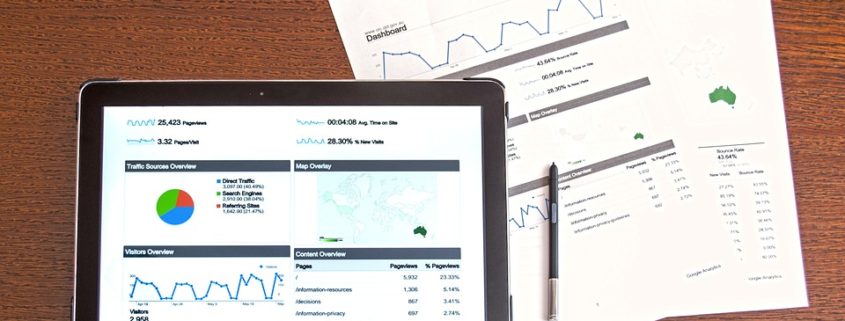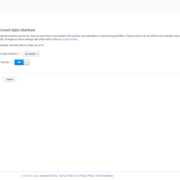How to Create Actionable Marketing Reports
Marketing reporting and analysis can be a real pain, but not to worry. Prior to working as a digital marketer, I was the development reports writer for my university. If you’re not familiar with the Office of Development, you will be one day. That’s the office that does fundraising, and my job within it was to tell people where their money went. In that role, I learned a lot about how to write an effective and actionable report. I use this knowledge daily at Chow-Bryant, and there’s no reason that you can’t too.
Business Topics That Should Be Covered in a Report
For any effective business report, there are a handful of topics that are consistently useful:
- Who was touched by marketing efforts?
- What was marketed to them?
- What time period did this take place in? (Alternate: What is the campaign duration? When did the campaign start and end?)
- What reasons did you give the audience to care?
- Where was the money spent and why?
To be honest, things become tricky once you ask about budgets. People often are uncomfortable discussing money, but you must know the info to report accurately. Therefore, I recommend keeping detailed spend records within your department to make it easier on everyone.
No need to talk about money if we have documentation that does the speaking for us.
SWOT Like You Mean It
Now, if we take the above five questions, we can plug them into almost any kind of business report and create actionable intelligence. SWOT analysis–which some people decry as too weak–becomes a lot stronger with these questions.
Bear in mind, if you’re honest about your marketing results, this kind of analysis can be brutal. It’s very normal to find results that you’re not happy with. If you never look at these bad results, though, you can never fix them. It’s much the same for the good results. If you never recognize them, you might not continue them. Have a strong stomach, because this might be hard to swallow.
-
Strengths
- Who did you reach most often? Who became your advocates?
- What product, service or brand was the most appealing?
- When did the website receive the most traffic from the marketing campaign?
- What features of the product, service or brand caused the most interactions?
- What had the strongest performance for the least money? How much was spent and why?
-
Weaknesses
- Who didn’t you manage to reach? Who rejected the product, service or brand?
- What product, service or brand was the least appealing?
- When did the website receive the least traffic from the marketing campaign?
- What features of the product, service or brand caused the least interactions?
- What had the weakest performance for the most amount of money? How much was spent and why?
-
Opportunities
- Who was an unexpected target audience that showed up in our analytics?
- Did any product, service or brand turned out to be a sleeper hit?
- When/where did the campaign perform best? For instance, no one would expect a busy movie theater on Thanksgiving Day, but it is one of the busiest days of the year for theaters.
- What features that were not a part of our marketing campaign did you see people discussing or requesting the most?
- What did we expect to underperform that outpaced other parts of our marketing efforts? How much was spent? What were the expectations, and why did we get more than that?
-
Threats
- Who is tapping into the same targeting as we are?
- Does anyone offer a similar product, service or brand?
- What times are coming up that we think will be bad for the campaign? For instance, during the holiday shopping season, it’s probably a bad idea to have an in-store coupon stacked on top of sales.
- Why are marketing targets unaffected by our efforts? Is this an internal threat (which we can fix) or an external threat (which we need to strategize around)?
- Do we have changes to our budget coming? How will this affect our marketing efforts?
This is a long list, and it is just an outline to get you started. You need brutal honesty when you use SWOT analysis. Honesty shows you what is and is not worth your money and effort. Once you tie results to costs, it’s easy to see what should and should not have priority, but only if you weight all your efforts for cost-benefit. Additionally, you won’t always have an answer for all questions.
A Real-World Example: Chow-Bryant’s Content Campaign
If I was to do this for the content campaign for our start-up performance marketing agency, the SWOT analysis would look like this:
Who was touched by marketing efforts?
We did not specify an audience as this is a completely organic campaign. We did improve our local market share and backlink profile by using our own local SEO services.
- Strength: Unexpected, consistent traffic from the UK.
- Weakness: Analysis showed some traffic originated from a new form of spambot.
- Opportunity: Could write more posts for the European audience, and promote them during the European business day. Write a blog article about new kind of spambot and how to remove it from your reports.
- Threat: There are a lot of digital marketing agencies out there, and it’s hard to tell the value of their retweets.
What was marketed?
We marketed our services and expertise via blog posts.
- Strength: Local SEO caused an uptick in traffic within 5 days of being complete. Longer how-to articles create the most site traffic over time.
- Weaknesses: When looking at our analytics, we noticed long times on page, but high bounce rates.
- Opportunity: We need to make sure our site is easier to navigate.
- Threat: Checklist and how-to SEO articles are plentiful. We need to stay away from those.
What time period did this take place in?
We’ve been running this campaign since October 8, 2016.
- Strength:
- Weakness: Leading up to the U.S. election, there was some odd junk traffic to the website.
- Opportunity: After researching the junk traffic from around the election, we determined that this is room to write a blog post on how to filter such traffic out of analytics reports.
- Threat:
What reasons did we give the audience to care?
Our audience should care because we’re giving them info on digital marketing so that they can handle marketing tasks internally. By doing so, they should be able to free up budget and gain skills.
- Strength: For more technical information, there seems to be a lot of people staying on page longer.
- Weakness: For more news-like information, there isn’t much traffic.
- Opportunity: If we position the blog as a go-to for technical information, we may be able to further increase time on site and return traffic.
- Threat: Technical articles take longer to write, so we will likely have to plan them further in advance.
Where was the money spent?
Right now, our biggest “cost” is time. We spend about 12 hours per month ($1,260 at our hourly rate) writing and promoting blog posts. With our current blog traffic, each conversion has a cost of 0.1 hours ($10.50 per click). Ideally, we need to get that cost down. This does not factor in social media comments and likes.
- Strength: By using internal resources, we save money.
- Weakness: Our lost opportunity cost per visit is too high when factored with our agency hourly rate. As a result, we either need to lower our opportunity cost.
- Opportunity: We should focus on writing faster. In addition, we should also include social media interactions in our future reports.
- Threat: We may need to adjust our content calendar to control costs.
I’m probably telling you more about our internal marketing than I should, but what kind of marketer would I be if I hid what I tried? Additionally, you deserve to know if our marketing works for us, especially since I don’t have to violate a non-disclosure agreement to do so.
If you have any questions about reporting and getting actionable data from your reports, contact us, leave a comment on Facebook or tweet at us. We’ll try to answer all questions.






